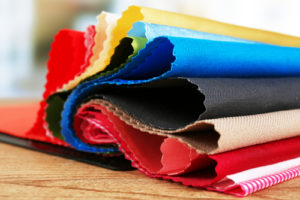
Chemical Treatment Processes
These days a lot of people overlook the fact that the clothes on their backs went through drawn-out, resource-intensive production processes just to reach them. Even widely hailed natural fibers such as wool and cotton could at some point have been sprayed with pesticides, herbicides and other undesirable-killers.
Treatment Processes
There is also the fact that most cloth needs to be dyed before it hits the market, as well as treated with compounds which make it resistant to odor, fire, stains, water, and wrinkling. Not to mention petroleum-based fibers such as nylon and polyester, which pull in even more chemicals to the mix by the time that they hit shelves, thanks to textile printing and other similar processes.
Lax Regulations
Unfortunately, just like in the home-cleaning industry, the standards and regulations in the textile and fashion industries too are notoriously lax. Clothing retailers are required today by the FTC to share little more than country of origin, fiber content, and identity of manufacturer. There is nothing that forces companies to reveal the chemicals used during production, although an estimated minimum of 250 “restricted substances” get used in that area.
The Greenpeace DETOX Campaign
Other than The BtL “F”ed Up Fashion 5, there is a list of chemicals which consumers need to avoid when they buy clothing, or at least be aware of. The Greenpeace DETOX campaign lays out several more that designers and manufacturers should steer clear of when they source and produce fabrics.
- Phthalates
- Short-chain chlorinated paraffin
- Chlorinated and brominated flame retardants
- Alkylphenols
- Perfluorinated chemicals
- Chlorophenols
- Azo dyes
- Chlorobenzenes
- Chlorinated solvents
- Organotin compounds
- Heavy metals like chromium, cadmium, mercury, and lead
Heavy metals often find use in fabric-making, where they act as adhesives which ease dyes sticking to fabrics. When retail or wholesale fabrics made in this way is worn, the heavy metals can seep in the skin pores and cause issues with the wearer’s endocrine system, which covers the functioning of the adrenal and endocrine glands. This can often lead to cancer, as well as behavioral and neurological disorders.
Kirsten Brodde of the Detox my Fashion initiative by Greenpeace opines that detoxification is a new baseline in the industry, “…because forerunners of the textile sector went from total denial and opacity of their supply chain to transparency and the banning of all hazardous chemicals…the rest of the industry that’s using hazardous chemicals is not an option anymore.”

